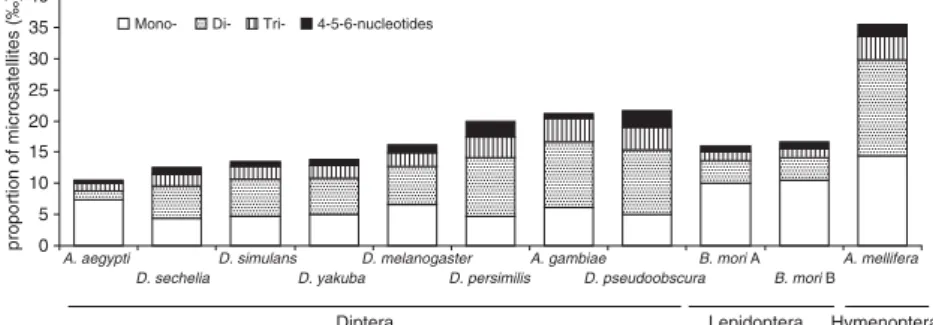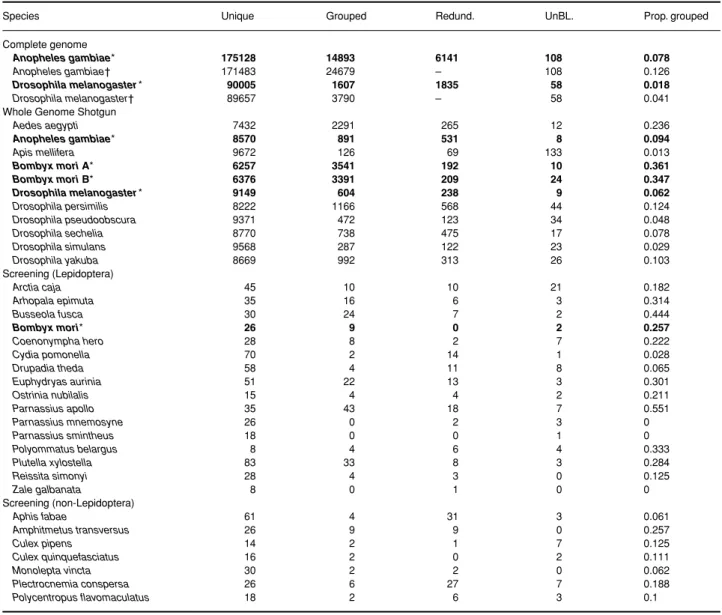Microsatellite flanking region similarities among different loci within insect species
Texte intégral
Figure




Documents relatifs
Moreover, using the Aspergillus-specific primer kit, the same electrophoretic profile was seen for patient P5’s isolates and most of the isolates from patient P8, whereas the use of
The greater number of quail markers that amplified chicken DNA as opposed to guinea fowl DNA, and the higher similarity of the quail-chicken flanking sequences compared to
Also, as the cross-species amplification tests revealed PCR fragments of expected size also for the other species analyzed we are confident that, with few exceptions (Table II ),
Table 1 - Microsatellite characterisation in Calidris alba on the basis of novel loci (above line) and cross-species amplification from Carter and 231. Kempenaers (2007;
Columns are: cluster name (where the subscript C indicates that the cluster comes from the CLASH survey, the other clusters belonging to the DAFT/FADA sample), coordinates,
For Rorty, it is myth because it is an idea that has outlived its time; if it was once culturally significant, an overstated invitation to think beyond reified ways of
singularis microsatellite primers used in this study amplified in either of the other two mirid species, which suggests that the primers designed for S.. singularis
Réunion population corresponds to R1 type, while Nelspruit and Mpumalanga populations are partially or largely R2 type. Tanzania: Morogoro population (400-500 masl) correspond